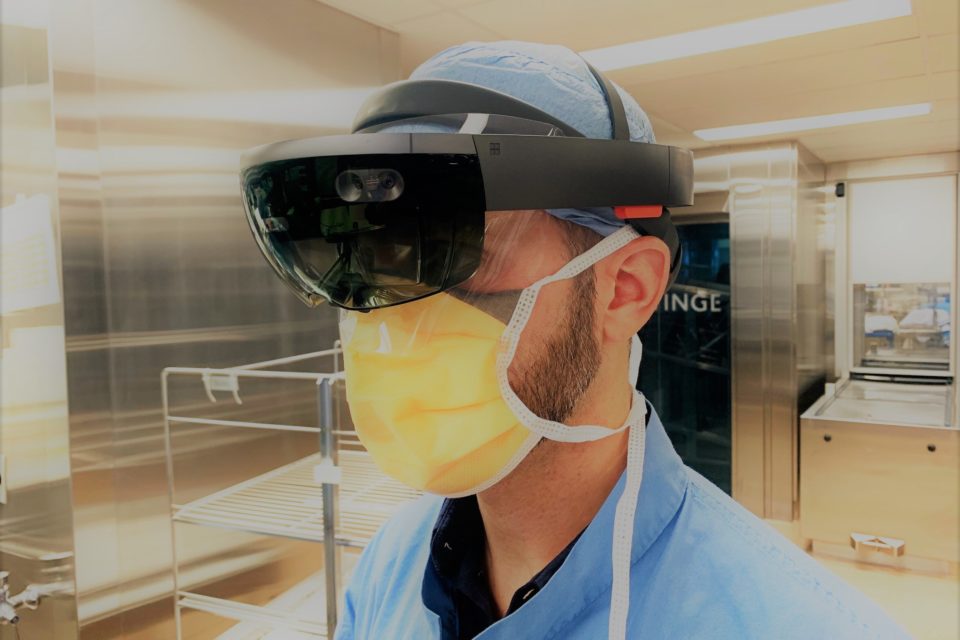In a major Montreal hospital grappling with an unprecedented public health care crisis, managing resources – including specialists – can be an enormous challenge.
Montreal’s Jewish General Hospital (JGH), the lead hospital in a network of over 30 health care institutions in the city, was designated by the Quebec government at the outset of the pandemic to be the province’s lead hospital for COVID-19 care.
In a matter of weeks, JGH was treating up to 200 COVID-19 patients at a time with a wide range of severity of symptoms. Originally designating one COVID floor, the hospital quickly had to convert eight entire units to coronavirus wards in order to deal with the pressure of the pandemic and the ever-increasing cases.
Not only was creating enough space a necessity, but there was also the need of delivering often urgently needed specialized care for this wave of highly infectious patients with previously little-seen symptoms. The availability of enough clinical and nursing staff with the required skill set was an immediate concern as the hospital quite literally needed staff to be in two places at once.
Enter the Microsoft HoloLens with Dynamics 365 Remote Assist.
Working in collaboration with Auger Groupe Conseil, a Quebec engineering firm led by Marcel Lafontaine, JGH adopted the HoloLens with Dynamics 365 Remote Assist and quickly worked to deploy and retrain staff, all while at the same time coping with a growing number of new patients.
Within two weeks, staff specialists were piloting this technology and were able to take advantage of its hands-free telemedicine capabilities. In the pilot simulations, specialists that were urgently needed in one part of the hospital would be able to immediately – and virtually – be at the bedside of a patient in need, no matter where they might actually be at the moment – whether on-site or even at home getting some well-deserved rest.
Turning to Technology to Protect Healthcare Workers
Wearing the HoloLens and connecting via a secure live video-feed using Microsoft Teams, the attending clinician was virtually linked through Dynamics 365 Remote Assist, a mixed reality remote support tool, to a team of specialized experts. The clinician is able to connect with a range of patients, whether it was a patient in the Intensive Care Unit in distress while hooked up to a ventilator, or a wound care need for someone developing pressure ulcers from protracted time in an acute care bed.
Not only did HoloLens immediately “bring” needed experts to where they were urgently needed, the device can reduce the number of people required to be physically present with the COVID-19 patients, significantly reducing the risk of potential exposure to clinical staff.
The care experts could see everything the staff member at the bedside was seeing, and could talk them through necessary procedures, step-by-step, in real time. As medications were needed, virtual prescription forms for the hospital dispensary could be instantly opened and submitted for filling on the spot. Charts and care notes were similarly updated and shared with specialists in real-time using the HoloLens.
Dr. Lawrence Rudski, Chief of Cardiology at JGH and one of the leaders of the project, said “the COVID-19 pandemic came on fast and furious, and we quickly found ourselves in a position where we had a hospital full of patients that needed immediate, specialized care. Protecting staff was a major motivating factor for this project, but so was protecting patients.”
“We needed an innovative solution, and I can truthfully say there’s nothing out there like HoloLens. It’s a powerful device, but so much more. The ease of use, the short learning curve, the interfacing with hospital systems, cameras, ability to interface with PACs systems, and of course the Microsoft Guides and Remote Assist applications make it invaluable in a fight like this.”
Preparing for the Second Wave with Innovation
Dr. Rudski says the hospital’s experience with HoloLens amid the first wave of COVID-19 proved the tremendous capability of the technology and will help the team be better prepared for a possible second wave.
“We are now looking into other areas to deploy this powerful technology and we are focusing on addressing some challenges we identified in the first go-around,” he says. “These include lacking specialists in our affiliated nursing home and rehab hospital settings, pairing up doctors in these institutions to make care more efficient, as well as having enough trained nurses in the ICU, should the number of patients needing ventilators proliferate.
“We also expect that the experience that we gain during these projects will refine how we will use the HoloLens in other non-COVID settings in the hospital, in other sites, and even out to home care in the community. As the HoloLens evolves, we will work with Auger Groupe to incorporate these advancements and we will leverage them into our patient care plans,” said Dr. Rudski.




